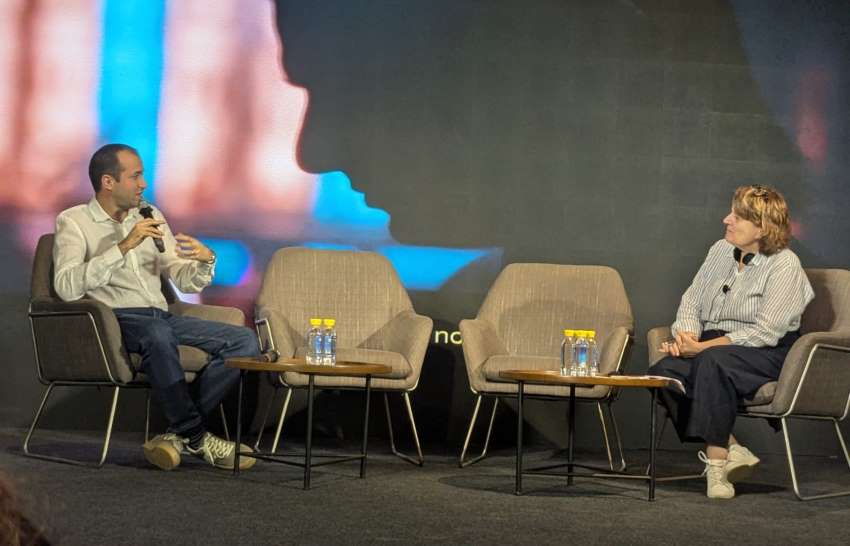
The summer of 2025 brought an abrupt end to the modest recovery that China’s apparel industry experienced in the previous year. What was anticipated as a stabilization period turned into a struggle against compounding economic and geopolitical headwinds. From January to July, the main narrative was one of contraction, driven by geopolitical risk, high operational costs, and unprecedented weather disruptions that crippled production schedules during the traditional off-season.
The industry found itself trapped in a difficult transition: manufacturers were investing heavily in future high-tech production (evidenced by the surge in fixed-asset investment), yet their current profits were collapsing under the weight of weak overseas demand and intense price competition. The foundation for recovery, as the industry noted, needed drastic reinforcement.
The production paradox and output decline
The manufacturing heart of the apparel sector, enterprises ‘above a designated size’, showed clear signs of stress. The industrial added value fell by 1.2 per cent year-on-year, a marked increase in decline compared to the first half of the year. This fall was not merely a slowdown but a reversal of the moderate growth seen in 2024 (when industrial added value rose by 0.8 per cent Y-o-Y).
The physical output of garments mirrored this decline, dropping by 0.29 per cent Y-o-Y. This production slump points directly to manufacturers curbing capacity in the face of dwindling orders—a pragmatic response to falling profits, but one that signals deep-seated market anxiety.
The domestic lifeline and digital resilience
Domestically, the consumer remains cautious but present. Total retail sales of apparel goods above the designated size recorded a growth of 2.2 per cent (599.24 billion yuan). While this growth is slow, it is slightly stronger than the full-year 2024 rate of 0.1 per cent, suggesting that promotional activities or new product launches in the first half of 2025 provided a marginal lift.
The true example of resilience was the digital marketplace. Online retail sales of wearable items grew by 1.7 per cent Y-o-Y, growing slightly compared to the first half. This reflects two trends: the Chinese consumer prioritizing value and efficiency (often found online), and manufacturers increasingly relying on direct-to-consumer (D2C) channels to bypass sluggish traditional retail flows.
The export freeze and geopolitical diversification
China’s role as the world's apparel factory faced its most significant challenge from external pressures. Total apparel and accessories exports reached $88.62 billion, declining by 0.3 per cent year-on-year. This negative turn is critical when viewed against the prior year's performance.
Table: China apparel value trends
|
Period |
Export value ($) |
Y-o-Y Change |
Trend Observations |
|
Jan-July 2023 (Estimated) |
$89.7 billion |
Approx -8.2% (vs 2022) |
A sharp decline in export value, likely due to a post-pandemic inventory correction, high inflation, and a general slowdown in demand in key Western markets. |
|
Jan-July 2024 |
$88.98 billion |
-0.8% (vs 2023) |
The decline significantly moderated compared to 2023, suggesting the market was stabilizing after the massive drop in the previous year. |
|
Jan-July 2025 (Input Data) |
$88.62 billion |
-0.3% (vs 2024) |
The export value continues to decline, but the rate of contraction has nearly halted, indicating a strong movement towards market stabilization or a potential return to modest growth. |
The inability to grow exports, even marginally, underscores the success of the global China Plus One strategy, where major Western brands are diversifying sourcing to Vietnam, Bangladesh, and India due to ongoing US-China trade tensions and compliance concerns This shift impacts orders, particularly for low-to-mid-value, labor-intensive products.
The profit crisis vs. the investment bet
The most concerning data point is the dramatic collapse in corporate profitability.
Table: China textile & apparel industry financial performance
|
Indicator |
Jan-July 2025 |
2024 (Full Year) |
Implication (Jan-July 2025 vs. Full Year 2024) |
|
Total Main Business Income |
665.47 billion yuan |
1.27 trillion yuan (+2.76% Y-o-Y) |
Revenue contracting sharply: The 7-month income is barely half of the full 2024 income, indicating significant negative Year-over-Year growth compared to Jan-July 2024. |
|
Total Profit |
25.03 billion yuan |
62.38 billion yuan (+1.54% Y-o-Y) |
Plunge in Profitability: A direct Year-over-Year decline of −14.20% (The decline is not calculated from the full year number, but is the actual Y-o-Y change for Jan-July 2025 vs. Jan-July 2024). |
|
Operating Margin |
3.76% |
4.91% |
Severely Squeezed: The profitability margin fell by −1.15 percentage points (4.91% - 3.76%). |
A 14.20 per cent drop in total profit, alongside a 2.26 per cent revenue decline, suggests extreme margin compression. Companies are likely slashing prices to maintain market share or absorbing higher costs (labor, raw materials, compliance) without being able to pass them on to the final consumer.
In a counterpoint, fixed-asset investment in the garment industry grew by 25.2 per cent year-on-year. This investment is predominantly directed towards high-tech manufacturing, automation, and digitalization, a strategic long-term bet by China to shift the industry's focus from cheap, high-volume production to high-value, fast-response, and smart manufacturing, in line with the nation’s 14th Five-Year Plan focus on high-quality development.
The dual reality of h1 2025
The volatility of the market is best illustrated by the half-year performance of few Chinese listed apparel companies.
Semir Group: Retailer focus
• H1 2025 Revenue Growth: +3.26% Y-o-Y
• H1 2025 Net Profit Decline: −41.23% Y-o-Y
Semir, known for its strong domestic retail presence, successfully managed to increase sales, likely through aggressive promotion or effective product launches. However, the catastrophic decline in profit shows this revenue was bought at a severe cost, either intense discounting, growing marketing expenses, or rising operational costs. This is the clearest example of the profit crisis highlighted in the macroeconomic data.
HLA (Heilan Group): Resilience under pressure
• H1 2025 Revenue Growth: +1.72% Y-o-Y
• H1 2025 Net Profit Decline: −3.42% Y-o-Y
HLA, one of the more established domestic leaders, showed greater resilience. While its profit still declined (reflecting the unavoidable margin pressure), the small magnitude of the drop compared to its peers suggests superior supply chain management, stronger brand loyalty, or better cost controls. HLA's performance serves as a benchmark for stability, but even its core profitability was not immune to the market chill.
Table: China textile & apparel industry performance (Jan-July 2025)
|
Indicator |
Jan-July 2025 |
Jan-July 2024 (Y-o-Y Change) |
Historical Context (FY 2024) |
Trend Direction (Y-o-Y) |
|
Industrial Added Value |
+3.7% |
+3.7% |
Up 0.8% |
Counter-Cyclical Growth |
|
Garment Output (Volume) |
N/A |
-0.29% |
Up 4.22% |
Production Cutbacks |
|
Domestic Retail Sales (Apparel Value) |
599.24 billion yuan |
+2.2% |
1.07 trillion yuan (FY 2024) |
Slow Growth |
|
Exports (Apparel & Accessories Value) |
$88.62 billion |
-0.30% |
US$88.98 billion (Jan-July 2024) |
Export Stall |
|
Fixed-Asset Investment (Textile) |
N/A |
+25.2% |
N/A |
Sustained Upgrade |
|
Total Main Business Income |
665.47 billion yuan |
-2.26% |
Up 2.76% (FY 2024) |
Revenue Decline |
|
Total Profit |
25.03 billion yuan |
-14.20% |
Up 1.54% (FY 2024) |
Profit Collapse |
|
Operating Margin |
3.76% |
−1.15 ppt (vs. Jan-Jul 2024) |
4.91% (FY 2024) |
Margin Squeeze |
The Chinese textile and apparel industry therefore is experiencing a painful structural adjustment. The positive trends in industrial added value and fixed-asset investment highlight a successful government and industry-led push for modernization and high-quality development. However, this is overshadowed by acute commercial pressure from weak global and domestic consumption combined with fierce internal competition, which is driving a sharp collapse in profitability and a severe squeeze on operating margins. The industry is effectively sacrificing current profits for a future position as a higher-end, more automated, and technologically advanced global player.












